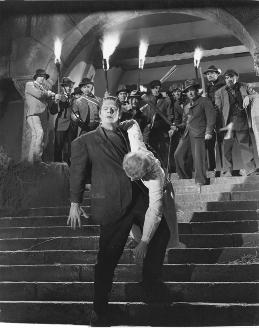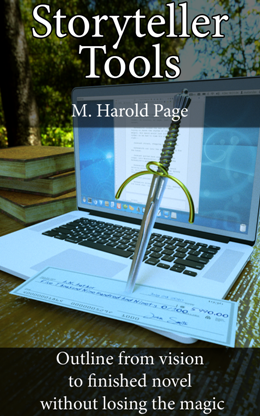Using Feedback from Beta Readers and Editors: The Parable of Frankenstein’s Monster

Beta readers — friends who read and comment on your work — and, if you are lucky or flush, professional editors, are great. They tell you things like:
“The characters seemed thin… I just lost interest.”
“The main character was such a #### that I couldn’t read on.”
“Too much technical detail. I got bored.”
“The fight scenes went on too long.”
And they are always right — because reading is a subjective experience — but they are usually wrong, because the issue is usually not the issue.
It’s like Frankenstein’s Monster.
No, really. Let me explain…
In fact, let me tell you a story.
Victor Frankenstein builds a monster — a chimera of body parts — zaps it with lightening and takes it for an evening stroll to see if it will pass for human.
People scream and point: “OMG! That thing has a bolt through its neck! It’s not human. It’s a MONSTER!”
Victor drags his monster back to his storm-girt castle and sits staring at that bolt. “Perhaps we can disguise it in some way? Paint it a flesh tone? Or perhaps the monster can wear a scarf?”
Days — weeks! — later, Victor has disguised the bolt heads with India rubber fake skin, had a blind seamstress run up a high-collared shirt for the monster, and dug out a really nice long scarf to wrap around his bull neck.
It’s time for another try.
They get as far as the village square before people start screaming: “OMG! That thing has a stitches holding its face together! It’s not human. It’s a MONSTER!”
As he flees the mob of pitch-fork and torch wielding peasants, it suddenly hits Victor:
The bolt isn’t the problem.
The stitches aren’t the problem.
The problem is that the poor monster lumbers along so slowly that he spends too long under each street lamp: no wonder people notice something is wrong.

A book, my friends, is like Frankenstein’s monster.
A novelist crafts a book from bits they find lying around, sometimes in unpleasant places. The skin creates the illusion of character and depth behind it. Parts of it are nasty or uncomfortable. For some genres, other parts are quite technical and there are long violent sequences. And yet people routinely read — even pay for — books in which cipher-like obnoxious lead characters tinker with technology while engaging in endless gunfights.
How can this be?
For genre books it’s down to story… but not the way people normally mean when they nod their heads sagely and pronounce, “Write a good story and all will be well” (and before that “Just Write“).

Story is what happens when characters characterify (made up word).
We don’t really know a person’s character until we see how they behave, what decisions they take, so if the characters “feel thin”, perhaps you need to give them more agency.
If they are uncomfortably obnoxious — if your main character is “a ####” — then perhaps you need to show the practical consequences of their actions so we can enjoy anticipating them (Flashman, for example, is a bully and a cad, but this tends to have amusing repercussions).
Technical detail is boring (unless your name is an anagram of “Can Colt My”), but suddenly less so when it really matters to the fate of the characters, and even less so if you present it as a story in its own right.
Oh and description? I didn’t mention description. Readers can only really see it when it relates to the story. So if you have “too much description”, you might not need to cut. Instead, make it matter: stick a sniper in the belfry.
Finally, long combat scenes are actually OK if they are part of the story in their own right and can’t just be summarised as, “Plowboy Smites Dark Lord.” But I’ve blogged about that.
So it is down to story, and the issue isn’t usually the issue.
If the bolt through your story’s neck stands out too much, check to see if it’s walking funny.
M Harold Page is the sword-wielding author of works such as Swords vs Tanks (Charles Stross: “Holy ****!”). For his take on writing, read Storyteller Tools: Outline from vision to finished novel without losing the magic. (Ken MacLeod: “…very useful in getting from ideas etc to plot and story.” Hannu Rajaniemi: “…find myself to coming back to [this] book in the early stages.”)